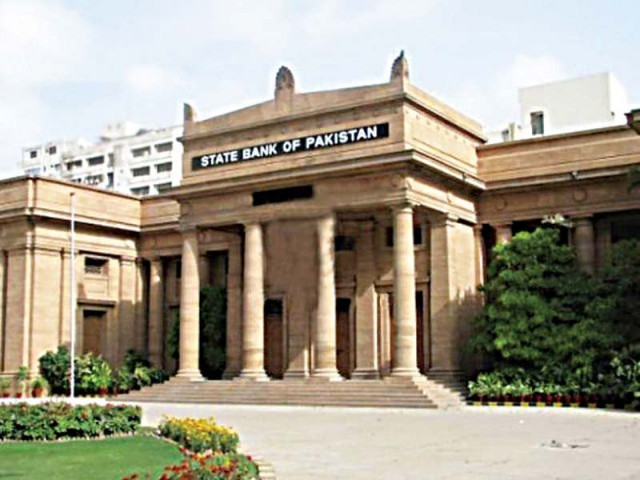Banking spread shrinks in Jan-Mar quarter
Stands at 5.16%, which is the lowest for 11 years

The banking spread has mostly been shrinking for more than a year in the wake of accommodative monetary policy of the SBP. PHOTO: FILE
The weighted average banking spread stood at 5.16% in Jan-Mar after shrinking by 0.11% over the preceding quarter, according to data released by the State Bank of Pakistan (SBP) on Friday.
The banking spread is the difference between average lending and deposit rates.
According to Taurus Securities, loan re-pricing dragged the average lending rate down by 0.25% from the preceding quarter to 8.56% although the benchmark interest rate remained stable in Jan-Mar.
The banking spread was 5.23% in March, which is up nine basis points from the average banking spread recorded in February. On a year-on-year basis, however, the banking spread shrank 0.68% last month.
Spreads are currently hovering at the lowest level for the last 11 years. This means banks are paying a relatively high interest to their depositors while charging a comparatively low mark-up on their lending.
The narrowing spread is a direct outcome of the record low benchmark interest rate that the central bank is maintaining in view of weak inflationary pressures.
The year-on-year fall in the average lending rate in March was sharper than the corresponding drop in the average deposit rate, SBP data shows. The average lending rate declined 1.94% to 8.53% while the average deposit rate stood at 3.3%, down 1.26% from the same month of 2015.

Analysts attribute the compressing spreads to unprecedented monetary easing and adjustment in the interest rate corridor by the SBP. The banking spread has mostly been shrinking for more than a year in the wake of accommodative monetary policy of the SBP.
The central bank has reduced the benchmark interest rate consistently since 2014, as it currently stands at a historic low of 6%.
Shrinking spreads result in decreased earnings for banks, leading them to invest more in riskless government securities that offer guaranteed returns.
Interest rates on loans are reset on a quarterly basis whereas deposits are re-priced immediately after the change in the benchmark interest rate.
The banking spread on gross disbursements and fresh deposits - also called the fresh spread - widened “significantly” in March though. It grew by 35 basis points to 3.39% in March on a month-on-month basis.
The fresh spread widened during the month mainly because of a dip of 51 basis points in the average cost of deposits to 3.74%. The average fresh lending rate came down 15 basis points on a monthly basis to 7.28% in March.
Analysts believe the average spread is unlikely to shrink any further, as monetary easing by the central bank has already bottomed out.
Published in The Express Tribune, April 23rd, 2016.
Like Business on Facebook, follow @TribuneBiz on Twitter to stay informed and join in the conversation.


1728020501-0/Express-Tribune-Web-(13)1728020501-0-208x130.webp)
















COMMENTS
Comments are moderated and generally will be posted if they are on-topic and not abusive.
For more information, please see our Comments FAQ